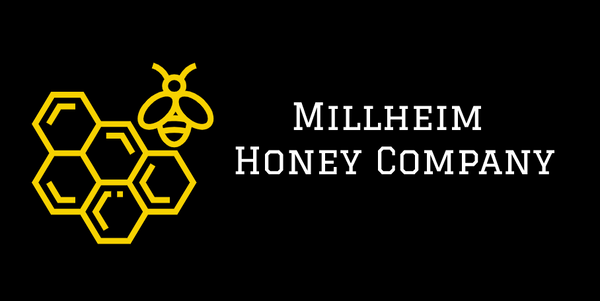
The Sweet Science: Exploring the Chemistry Behind Bees and Honey
At Millheim Honey Company, we’re not just passionate about bees; we’re also fascinated by the science behind what makes these tiny creatures so extraordinary. One of the most interesting areas to explore is the chemistry involved in honey production, bee communication, and even the wax they use for their hives. Today, we’ll dive into the chemistry behind bees and their incredible byproducts, helping you understand the marvel that is the bee world.
The Chemistry of Honey Production
Honey is a complex and natural substance that bees produce through a fascinating chemical process. After bees collect nectar from flowers, they store it in their honey stomachs, where enzymes begin to break down the sugars. One of the key enzymes is invertase, which converts sucrose into glucose and fructose. These simpler sugars make honey less likely to crystallize and easier for bees to digest. Once the bees return to the hive, they pass the partially digested nectar to other worker bees through a process called trophallaxis—essentially a bee-to-bee transfer!
In the hive, bees fan their wings to evaporate excess water from the nectar, reducing its water content to around 17-20%. This low water content, combined with honey’s high sugar concentration, creates an environment hostile to bacteria and fungi. That’s why honey has an almost indefinite shelf life if stored properly.
Bee Communication: The Role of Pheromones
While honey production is all about enzymes and sugars, the way bees communicate relies on chemistry, too. Bees use chemical signals called pheromones to relay messages about everything from danger to hive health. The queen bee releases a pheromone that helps maintain colony unity and suppresses the reproductive capabilities of worker bees. This pheromone—called queen mandibular pheromone—contains a mix of chemicals that control social behavior within the hive.
Worker bees also release alarm pheromones when the hive is threatened. These chemicals alert other bees and trigger defensive behaviors, like swarming or stinging. The fascinating thing about pheromones is how little is needed to create an immediate response, showing how finely tuned bees are to chemical signals.
The Chemistry of Beeswax
Beeswax is another product of the hive that is rooted in chemistry. Worker bees secrete beeswax from special glands on their abdomen, which they use to construct the honeycomb. Beeswax is composed of over 300 different compounds, but the main components are long-chain alcohols and fatty acids. The wax has a melting point of around 64°C (147°F), making it perfect for structural integrity in the hive while also being moldable when needed.
In addition to its role in the hive, beeswax is prized for its chemical stability and antimicrobial properties. This is why it’s often used in cosmetics, candles, and even food preservation. The unique combination of compounds in beeswax makes it highly water-resistant while still allowing for flexibility.
The Chemistry Behind the Sting
While most beekeepers like to avoid getting stung, the chemistry behind bee stings is interesting in its own right. A bee sting injects venom into the skin, which contains a mixture of proteins, peptides, and amines like melittin, histamine, and apamin. Melittin causes pain and inflammation by breaking down cell membranes, while histamine increases blood flow to the affected area, causing swelling. Apamin can affect the nervous system, contributing to the sharp pain we feel from a sting.
Interestingly, the venom’s complex chemistry also has medicinal uses. Apitherapy is an alternative medicine practice that uses bee venom for its potential anti-inflammatory and immune-boosting properties, showing once again how bees are full of surprises.
Conclusion: The Chemistry That Powers the Hive
Whether it’s the enzymes in honey, the pheromones that keep a hive running smoothly, or the wax that forms the hive’s walls, bees are nature’s chemists. At Millheim Honey Company, we marvel at how these tiny creatures use complex chemical processes to support life in and around the hive. The next time you enjoy a spoonful of honey or light one of our beeswax candles, take a moment to appreciate the sweet science behind it all.
Stay tuned for more behind-the-scenes insights from the world of bees and the incredible chemistry that keeps them buzzing!
